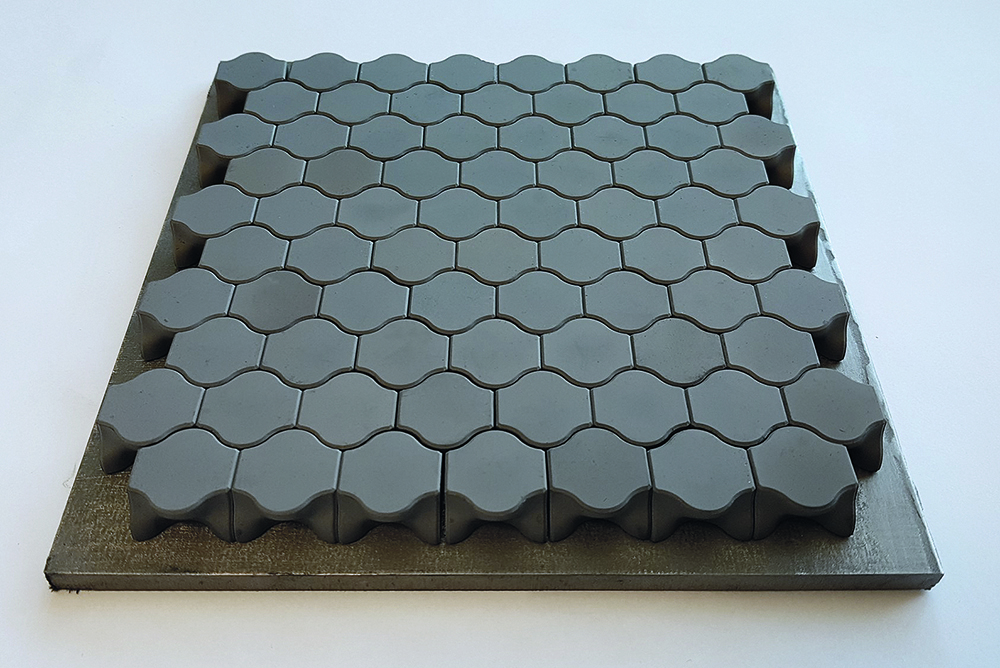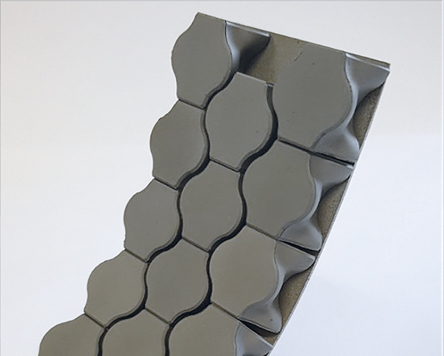Quick introduction: Mining and Offshore
Wear protection concepts for highly dynamically stressed components can currently only be implemented with high weight by metallic components or with very limited formability by ceramic elements. Based on concepts of “topological interlocking” [*], Fraunhofer IKTS has developed novel ductile ceramic reinforcements to combine the outstanding properties of both material groups – such as maximum strength and good formability – in a single product. In combination with cost-efficient soldering or bonding processes, these can be applied to complex steel surfaces and subsequently used for wear protection for centrifuges, rotors, recycling and processing plants or for high-speed machining. It is particularly advantageous that the DuktAr components are made of high-strength ceramic and can be assembled into surfaces of variable size thanks to the special geometry such as puzzle pieces. Thus, a high degree of design freedom is achieved and effective three-dimensional wear protection concepts are possible.
[*] Dyskin, A. V., Estrin, Y., Kanel-Belov, A. J. & Pasternak, E. Toughening by Fragmentation - How Topology Helps. Adv. Eng. Mater. 3, 885-888 (2001).
For the effective and cost-effective production of DuktAr parts, a new pressing process was established at Fraunhofer IKTS, in which the ceramic components can be produced in one step without mechanical finishing. For this purpose, a press mold was developed which, in addition to the classic vertical press plunger, contains two horizontal transverse plungers offset by 180°. Their surface maps the required 3D contour. Thus, in automatic mode, approx. 5 to 10 parts per minute can be produced and the required large quantities can be achieved. With this new manufacturing process, component series made of silicon carbide and aluminium oxide have so far been pressed, sintered and fixed to steel sheets by soft soldering or bonding. For the silicon carbide steel joint, the shear strength values of the brazed joint are 18 MPa, and for the adhesive joint even 40 MPa.

